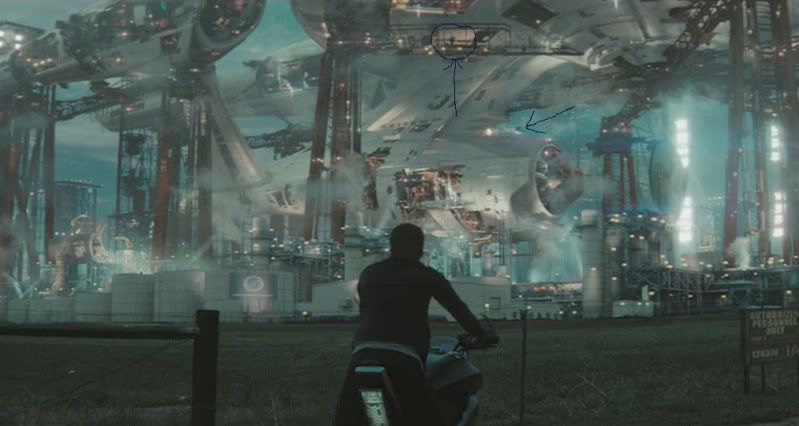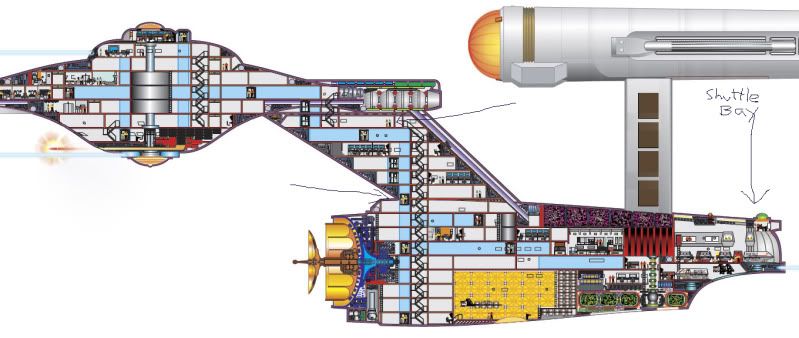Modelers and view painters (texture painters) at ILM built a larger, more streamlined Enterprise, the Romulan Narada, the drilling platform, and other ships and objects for the film, using Autodesk’s Maya, ILM’s Zeno, and Adobe’s Photoshop.
Although it stayed true to form, the Enterprise grew from 1300 feet to 2000 feet in length for this film. Its “neck” is thinner and more graceful, and it has more visible moving parts. The team worked from concept art created by Ryan Church and leaned on the experience of such crewmembers as Alex Jaeger, who was the visual effects art director at ILM for Star Trek: First Contact in 1996, and John Goodson, who was the model project supervisor for that film.
“The Enterprise is an icon,” says Bruce Holcomb, model supervisor. “We didn’t redesign it. We brought it into the future in a sophisticated way. One of our big tasks was to make people go into the film and believe they’re looking at a practical model. That’s the hardest thing to achieve.”
The Enterprise is always CG when seen from the outside, as are the other space vehicles, all of which ILM created. For the Narada, the studio consulted reference materials from production designer Scott Chambliss, who called for a mysterious, asymmetrical vessel. “The reference materials were all over the place,” Holcomb says, “from architecture to a photo of tangled hair. So there was a lot of back and forth.”
For Holcomb, the scale of the work was most challenging. “The Narada was six miles long and the Enterprise is 2000 feet. When they fly into camera, we always had to do something to make them look that big in CG.” For example, Holcomb estimates that modelers and painters altered the Narada on a shot by shot basis 70 percent of the time. “J. J. let us explore the dark aspect of it,” Holcomb says. “We dreamed up solutions and built and painted it accordingly.”






